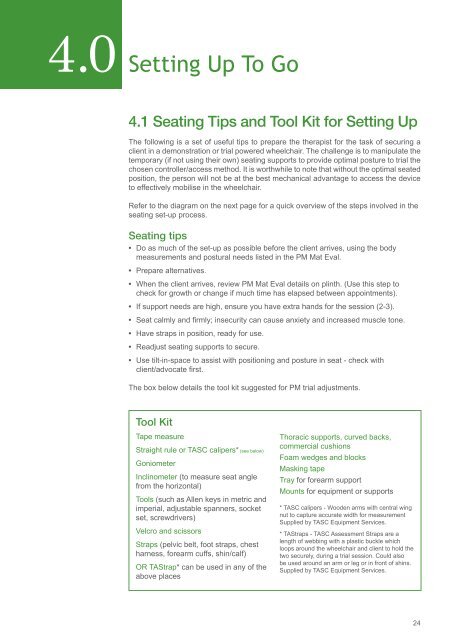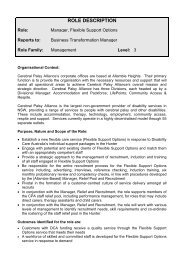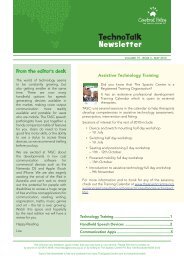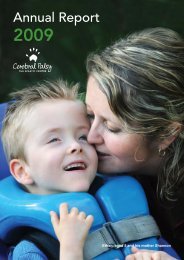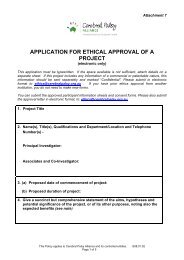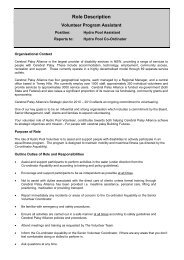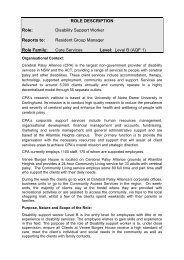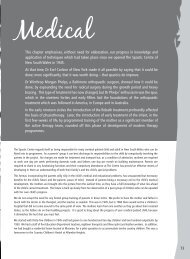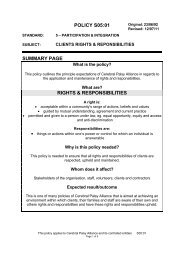Powered Mobility Manual - Cerebral Palsy Alliance
Powered Mobility Manual - Cerebral Palsy Alliance
Powered Mobility Manual - Cerebral Palsy Alliance
- No tags were found...
You also want an ePaper? Increase the reach of your titles
YUMPU automatically turns print PDFs into web optimized ePapers that Google loves.
4.0 Setting Up To Go4.1 Seating Tips and Tool Kit for Setting UpThe following is a set of useful tips to prepare the therapist for the task of securing aclient in a demonstration or trial powered wheelchair. The challenge is to manipulate thetemporary (if not using their own) seating supports to provide optimal posture to trial thechosen controller/access method. It is worthwhile to note that without the optimal seatedposition, the person will not be at the best mechanical advantage to access the deviceto effectively mobilise in the wheelchair.Refer to the diagram on the next page for a quick overview of the steps involved in theseating set-up process.Seating tips• Do as much of the set-up as possible before the client arrives, using the bodymeasurements and postural needs listed in the PM Mat Eval.• Prepare alternatives.• When the client arrives, review PM Mat Eval details on plinth. (Use this step tocheck for growth or change if much time has elapsed between appointments).• If support needs are high, ensure you have extra hands for the session (2-3).• Seat calmly and firmly; insecurity can cause anxiety and increased muscle tone.• Have straps in position, ready for use.• Readjust seating supports to secure.• Use tilt-in-space to assist with positioning and posture in seat - check withclient/advocate first.The box below details the tool kit suggested for PM trial adjustments.Tool KitTape measureStraight rule or TASC calipers* (see below)GoniometerInclinometer (to measure seat anglefrom the horizontal)Tools (such as Allen keys in metric andimperial, adjustable spanners, socketset, screwdrivers)Velcro and scissorsStraps (pelvic belt, foot straps, chestharness, forearm cuffs, shin/calf)OR TAStrap* can be used in any of theabove placesThoracic supports, curved backs,commercial cushionsFoam wedges and blocksMasking tapeTray for forearm supportMounts for equipment or supports* TASC calipers - Wooden arms with central wingnut to capture accurate width for measurementSupplied by TASC Equipment Services.* TAStraps - TASC Assessment Straps are alength of webbing with a plastic buckle whichloops around the wheelchair and client to hold thetwo securely, during a trial session. Could alsobe used around an arm or leg or in front of shins.Supplied by TASC Equipment Services.24


